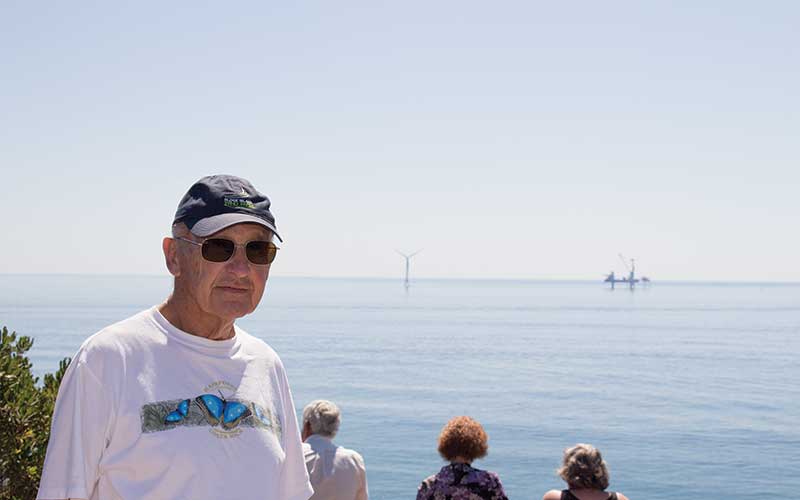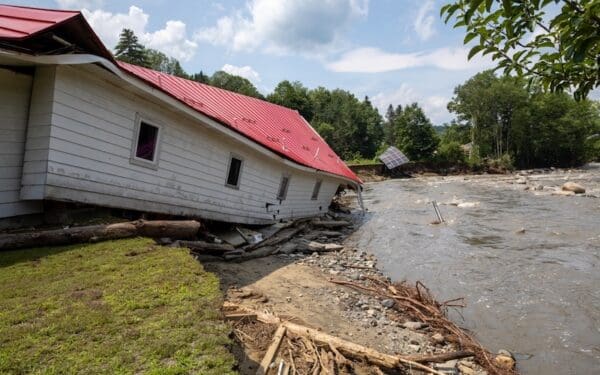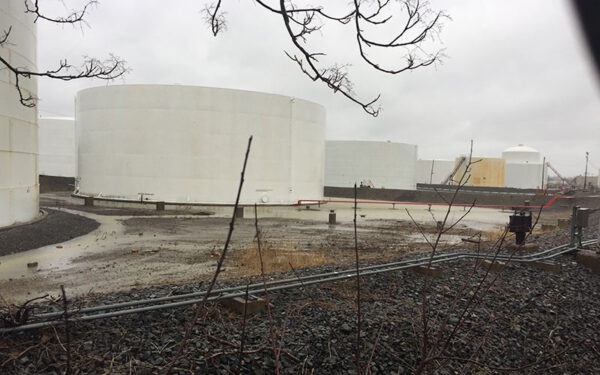
On one of those perfect, blue-sky-and-sunshine summer days that New Englanders dream of all winter long, Peter Baute emerges from a shaded trail into a small clearing overlooking Block Island Sound. At least half a dozen people mill about the clearing, cameras in hand, jockeying for the best angle of the scene before them.
They’re not here to photograph the cloudless sky, the blue-green water, or even the dramatic Mohegan Bluffs that plunge into the ocean nearby. Instead, they’re transfixed by three enormous wind turbines – part of the country’s first offshore wind farm – under construction three miles offshore.
“Nobody used to come to this view point,” Peter says. “Now, it’s gotten to be a major stop.” The turbines’ blades were motionless on that August day, but the full five-turbine farm was scheduled to go online in early November. The project, owned by Deepwater Wind, will supply energy to the entire Block Island community, with electricity to spare for the Rhode Island mainland.
Peter is as mesmerized watching the turbines rise up from the ocean floor as everyone else. But he also acknowledges that, for him, they’re more than engineering marvels. “They’re graceful,” he says. “And they mean something to me.”
The retired physician served on the Block Island town council when Deepwater Wind first proposed the project and he actively advocated for the wind farm over the seven years it took for its many permits to win approval. “It was a lot of hearings,” he says, “a lot of legal battles.” But, for Peter, the project’s benefits – from replacing the diesel generators currently powering the island (and cutting the pollution that comes with them) to the projected savings on residents’ monthly bills – were well worth the years-long effort.
What’s more, he says, “these turbines mean that we’re not burning oil and sending people into the ground to dig for coal.”
As a long-time island resident, Peter’s acutely aware of the impacts of climate change and the need to turn away from climate-warming fossil fuels. The main road to his home was washed out when Hurricane Sandy battered the island four years ago. “Year to year, sea level rise doesn’t look like anything. But 30 years out? We’ve seen eight inches in the last 20 years. It’s accelerating; it’s not slowing down.”
And, while he knows that this small project on Block Island won’t make much of a dent in stopping global climate damage, he sees the Block Island wind farm as a step in the right direction. “It depends more on what we do as a world than what we do here on Block Island,” he admits.
But as he looks out on the five turbines rising in his corner of the globe, he recognizes that big transformations often start with small strides. And, with larger offshore wind farms already planned for New England’s ocean, he’s proud to have played a part in blazing this new path for New England’s energy future.



